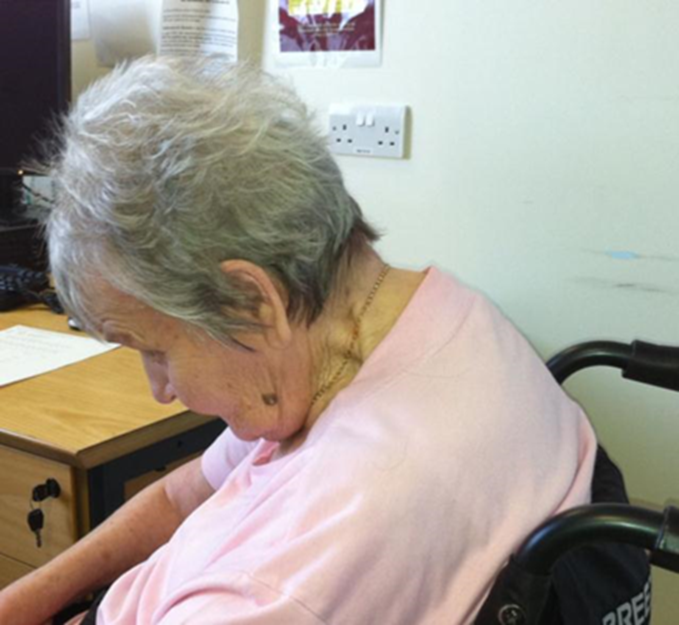Additional Reading III: Designing a neck support collar – a collaboration with people with Motor Neurone Disease
Designing a neck support collar – a collaboration with people with Motor Neurone Disease
People with Motor Neurone Disease often experience weakness of the neck muscles, resulting in difficulty holding up their head. This leads to pain and difficulty in making eye contact to communicate, looking at television or computer screens, eating and drinking, looking ahead to walk safely outside, driving and many other daily activities.

Figure 1: Revolutionary neck support technology transforms lives of MND patients
Link: Revolutionary neck support technology transforms lives of MND patients | Medical School | The University of Sheffield
A group of patients in Derbyshire, England, living with Motor Neurone Disease explained to their health care teams the problems with the current neck support collars. Some were soft and comfortable against the skin when wearing for long periods – but they did not provide sufficient support to hold up the head. Other, more rigid collars were able to provide sufficient support, but their rigidity resulted in restricted movement and dug into the skin.
Comments from patients and families included:
- “I think the main problem is eating, because his neck gone on one side and I’m having to try and get him a bit upright by sort of gently pushing on his head, that causes a problem with mealtimes”.
- “If anybody talks or wants to talk to her, she can’t see who it is, and they have to bend down or come up to her”.
- “I couldn’t see my computer or TV screen or make eye contact with my wife when talking”.
Working in collaboration, NIHR Devices for Dignity, Sheffield University, Sheffield Hallam University’s Lab4Living, Sheffield Teaching Hospitals NHS Trust, the Motor Neurone Disease Association and their members secured funding from the National Institute of Health Research’s i4i fund (Invention for Innovation) and from the Motor Neurone Disease Association. Designers, engineers, clinicians, healthcare professionals, and patients worked collaboratively to identify what design requirements a new neck collar should have, in order to design and iteratively improve a range of prototypes. The selected prototype was evaluated by 150 patients over a 1-month period in a multi-centre clinical trial. As part of this trial, people used the new neck collar in their homes during everyday activities. Feedback received from trial participants was incorporated into the final design of the new neck collar, which was CE marked, patented and licenced for commercial manufacture and distribution. The early engagement with people having experience with this specific [unmet] need was central throughout the design of the device: from identification of the unmet need, through the design and evaluation of the device. This partnership demonstrates the benefits and added value that patients can bring to the discussion, ensuring the final design of the device is fit for purpose and provides a tangible solution to their need.
Other references on this project:
Joe Langley, Silvia Pancani, Karen Kilner, Heath Reed, Andy Stanton, Nicola Heron, Simon Judge, Avril McCarthy, Susan Baxter, Claudia Mazzà & Christopher J. McDermott (2018) A comfort assessment of existing cervical orthoses, Ergonomics, 61:2, 329-338, DOI: 10.1080/00140139.2017.1353137
Sproson L, Lanfranchi V, Collins A, Chhetri SK, Daly N, Ennis M, Glennon L, Gorrie G, Jay E, Marsden R, McCarthy AD, Pryde L, Roberts R, Rutherford A, Ryan J, Stot G, Tindale WB, Shaw PJ, McDermott CJ. Fit for purpose? A cross-sectional study to evaluate the acceptability and usability of HeadUp, a novel neck support collar for neurological neck weakness. Amyotroph Lateral Scler Frontotemporal Degener. 2021 Feb;22(1-2):38-45. doi: 10.1080/21678421.2020.1813308. Epub 2020 Sep 10. PMID: 32909466.
All article available at: Full article: Fit for purpose? A cross-sectional study to evaluate the acceptability and usability of HeadUp, a novel neck support collar for neurological neck weakness (tandfonline.com)